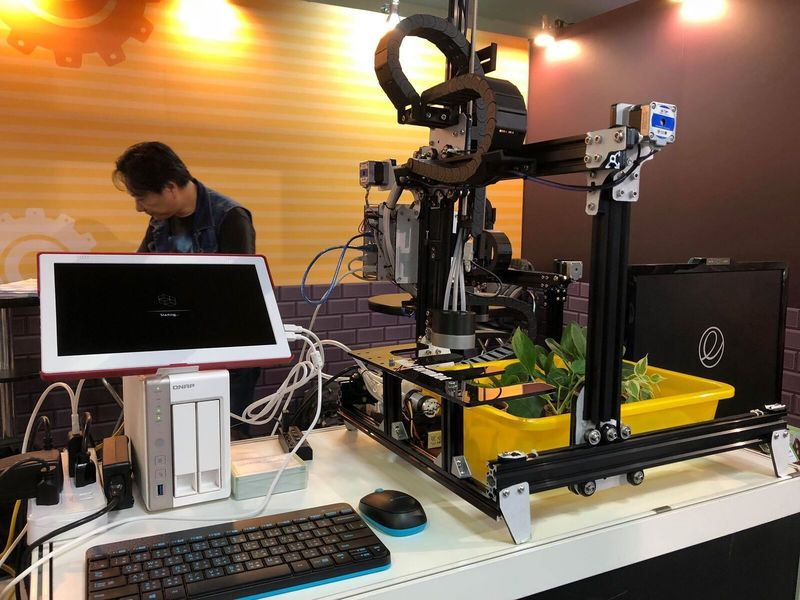How to Optimize Your Small Business Delivery Services
777
0
·
2020/08/04
·
4 mins read
☕
WriterShelf™ is a unique multiple pen name blogging and forum platform. Protect relationships and your privacy. Take your writing in new directions. ** Join WriterShelf**
WriterShelf™ is an open writing platform. The views, information and opinions in this article are those of the author.
Article info
Categories:
⟩
⟩
Tags:
Date:
Published: 2020/08/04 - Updated: 2020/11/18
Total: 888 words
Like
or Dislike
More from this author
More to explore








:max_bytes(150000):strip_icc():format(webp)/morganite-engagement-rings-4842386_final-396ade37421b459e8eca2c529cdb7d29.png)

Image Source: Unsplash
Growing demand for delivery may have you thinking it’s time to outsource your last-mile delivery process. But what if your team could deliver faster and more efficiently and handle greater capacity without giving up control over your customers’ experience? Route-optimization software has helped small businesses across the globe do all of these things and more.
The Delivery Challenges Small Businesses Face
When it comes to the local delivery challenges facing small businesses, we’ve learned a lot from working with more than 800 businesses all over the world. There is immense pressure on companies of all sizes to be able to compete with Amazon’s standard for two-day delivery and consumers’ rising expectations for convenience.
Shoppers expect retailers to offer delivery, and if those customers aren’t able to get their orders fast enough (or at a price that they find reasonable), many customers will go somewhere else. According to a study conducted by the National Retail Foundation, 90% of consumers say convenience impacts their decision when selecting retailers, and 97% of consumers reported that they had abandoned a purchase because they felt it was inconvenient.
Living up to these high standards can seem daunting. How can small businesses be saved from run the risk of digging themselves into a hole to catch up, especially if they’re planning routes manually or using third-party delivery services. Manual planning takes a lot of time, and this inefficiency makes it very difficult to scale a business when orders pick up. Fuel costs, wear-and-tear on delivery vehicles, and customers not being home when drivers attempt to drop off a product can all increase delivery-related expenses. It’s a lot to manage.
The Current Delivery Options Small Businesses Have
If you’re a small business struggling to keep up with delivery demand, you may have considered the following two delivery options, but outsourcing your deliveries comes with risks. It’s important to consider all of these factors before choosing one of these options, because your small business could pay a steep price in the long term.
Hire a third-party delivery service
Dylan Bolden, managing director and senior partner for Boston Consulting Group in Dallas, shared a key concern about third-party delivery services with CNBC. According to Bolden, “The risks are – if you’re a brand thinking about delivery – how can you control that experience if you’re using a third party.”
When you outsource deliveries to a third-party service, you lose access to customer data and insights that you could then use to develop better products or tailor your services to drive more sales. If you don’t understand your customers, it’s nearly impossible to know what they want and deliver on those desires to keep them coming back.
You run into another set of concerns if your products need to be delivered under a specific set of parameters. For example, let’s say you’re a grocery store, and you have customers ordering milk or frozen foods that need to be kept at a specific temperature. If your third-party delivery service doesn’t have a refrigerated truck, your products could spoil before they make it to customers. You’ll have to deal with returns, exchanges, potentially bad reviews, and even lost customers.
Third-party delivery services aren’t cheap, either, and they often favor large chains over small businesses and restaurants. On-call delivery companies such as Postmates and Uber Eats charge up to 30% in commission fees. Uber Eats does offer lower commission structures for certain partners, but only to larger chains with multiple locations (i.e., not small businesses).
Hire a third-party shipping service
Hiring a third-party courier service comes with another set of cost concerns. UPS, FedEx, and USPS all have their own package restrictions. Oddly shaped, oversized, or overweight parcels often incur additional fees.
Whether you’re making daily trips to the post office or dropping packages in a FedEx drop box, getting your products into the hands of a courier adds a step to the delivery process. Adding another step can set the delivery date to your customers back, which is likely to have a negative impact on your customers’ experience.
No matter what type of third-party delivery service you choose, you need to ask yourself a few questions:
Are you confident that your chosen courier will deliver a great customer experience?
If you offer fragile products, do you trust that your courier will transport those products safely so they arrive in one piece?
Is outsourcing your delivery process worth missing out on customer data?
If you answer no to any of these questions, outsourcing deliveries is probably not the best choice for your business.
Optimize Your Own Delivery
Fortunately, there is another solution. You can optimize your in-house delivery process using the same trucks, vans, and drivers you do now by using route-optimization software.
At the core of every business is the customer. Whether you’re selling products, services, or experiences, the success of your business hinges on achieving a high level of customer satisfaction.
As a small-business owner, you face plenty of challenges. You can get more of the resources that matter most — revenue and time — by incorporating route-optimization software into your existing delivery-planning process. You could use those resources to develop new products, expand your delivery territory, or simply pass the savings on to your customers. The choice is yours.
This article originally appeared on www.optimoroute.com.